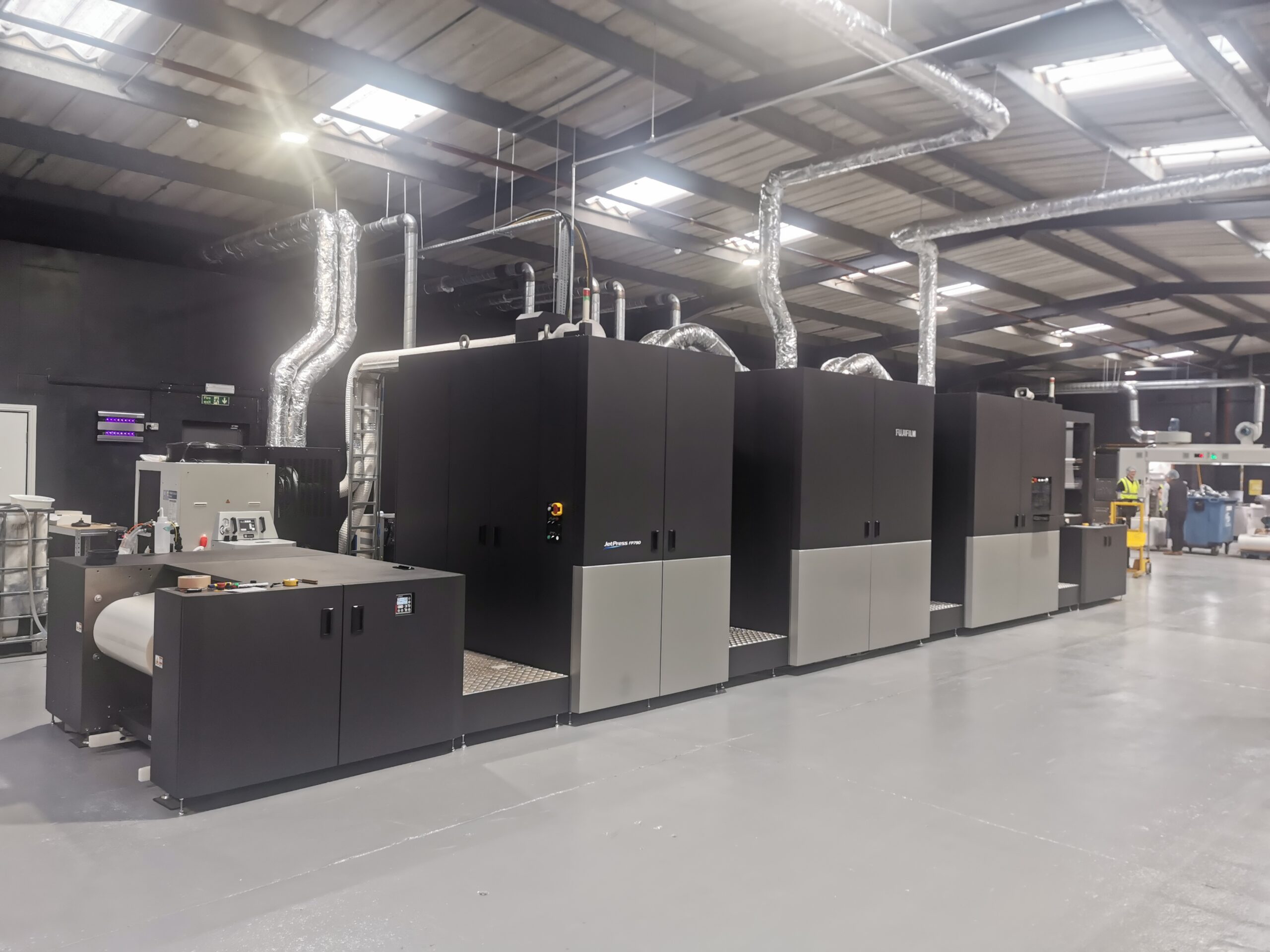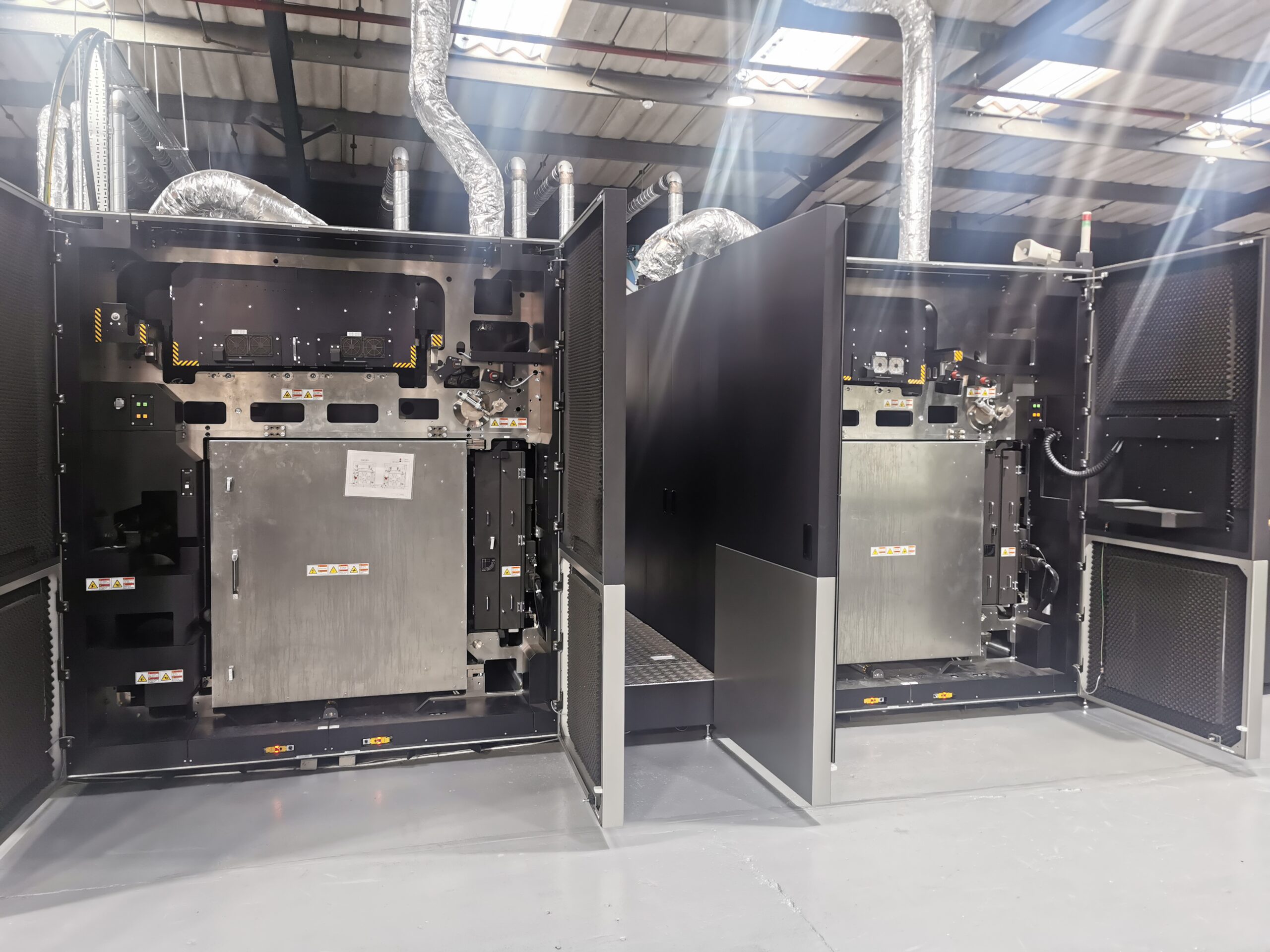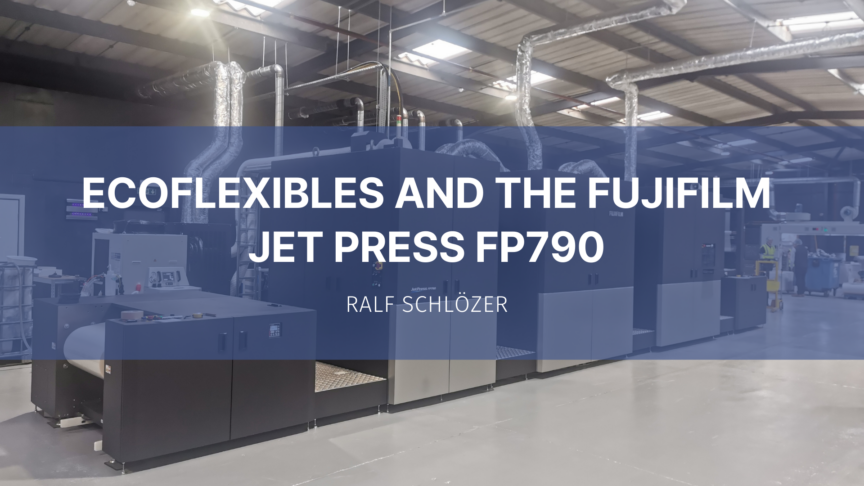Fujifilm hinted and teased the Jet Press FP790 inkjet press for flexible packaging for quite a while. Now the press has finally been unveiled at the first user site outside of Japan coinciding with its commercial launch and general availability. Digital print is no stranger to flexible packaging but the FP790 is moving productivity to a new level with a speed of 50 m/min (164 fpm) and a web width of up to 790 mm (31”). The more interesting it is to see which company made the jump first. (See previous coverage of the FP790)

Fujifilm Jet Press FP790 at EcoFlexibles
Making the debut at EcoFlexibles
EcoFlexibles is a relatively new company based in the UK. Interestingly the company is no classic printing company. Stemming from a predecessor company active in prepress and platemaking for narrow flexo label and flexible packaging presses, EcoFlexibles was founded as a print broker for flexible print with an additional focus on material and specification development for sustainability.
As part of the focus on sustainability, the company moved to water-washable flexo plates from Fujifilm in 2021. While label customers already moved to digital print massively, EcoFlexibles noticed average print runs coming down and increasing environmental concerns in flexible packaging as well and started to investigate options, which ended up with Fujifilm’s announced inkjet press.
EcoFlexibles sees the UK as being very receptive to short-run print, being a retail-driven market with many SKUs. In addition to environmental concerns, a plastic packaging tax came into force in the UK in 2022. It applies at a current rate of £210.82 per tonne on plastic packaging components with less than 30% recycled plastic. EcoFlexibles promises to cut down on the plastics used by producing just the needed amounts and avoiding waste and obsolescence.
With the investment in a digital press, EcoFlexibles plans to exploit the gap between existing low-volume digital solutions and flexo/gravure – while maintaining a high-quality level. The company noticed that flexo producers are pushing to even higher runs, while customers are seeking the opposite.
The Jet Press FP790 was installed at a new site EcoFlexibles moved to in early 2023. After installing the FP790 in July and adding a laminator in August the company started commercial production soon after. The beta status was concluded in December 2023 and the company now moved into two-shift production.

Samples on different materials and of print jobs produced for end customers
Typical runs start at 2,000 sqm, although EcoFlexibles has no minimum order amounts. The sweet spot is seen between 3,500 and 30,000 sqm, although many variables can play a role. Personalisation is a possibility with a digital press, although this is not exploited yet and the opportunity is rather small. Offering variable numbering and coding are more of an advantage to customers.
EcoFlexibles has about 25 employees to date, but the company is currently adding employees. The company already earmarked floor space at the premises for a second and third line and an additional laminator.
Under the hood of the FP790
The main specs of the FP790 have been pre-announced for a while and there were no noticeable last-minute changes at the commercial launch. As a quick recap, the printer runs at 50 m/min at 1,200 x 1,200 dpi with a web width of 790 mm and a print width of 733 mm.

Jet Press FP790 print towers with drying at the bottom
The press is promised to print on most common media including PET, BOPP, and paper-based materials in the 12-to-40-micron thickness range. EcoFlexibles states that no material has been encountered the company could not print on. Nevertheless, more testing is being done and not all exotic materials are likely to work. The press has a Corona treatment and an anilox primer as standard. The first print tower contains the CMYK units and a drier, while the second drier contains a double white bar. The paper transport is sourced from Miyakoshi, which offers a similar flex pack inkjet press in the Japanese market.
The 50 m/min print speed seems modest at first but Fujifilm states to play it safe as the technology is new. The speed is reached regardless of material and usage of white ink. The press base can certainly go faster and after some testing, the press should be able to speed up depending on material, print quality, and white density required.
Flexible packing is a quality-sensitive market, and the imaging resolution certainly helps in small text down to 2pt, or 3pt as negative text. The number of colours is limited to CMYK, however, with high-chroma inks, 90.5% of the Pantone gamut can be addressed within 2 delta-E, according to Fujifilm. Again, here Fujifilm is playing it safe and rather limits itself on process colour until the technology is proven. The second print tower is reserved for double white printing without space for additional units. The white opacity of 55% to 58% is sufficient for high quality print.
The future of digital print in flex pack
Fujifilm calls the FP790 a came-changer in mainstream flexible packaging print, although this will need to be proven in future adoption of the technology. It certainly moves digital print into productivity levels that can complement flexo or gravure print. 50 m/min sounds moderate as high-quality inkjet web presses run in the 100 to 120 m/min range, but the press is noticeably more productive than EP option. While quality, substrates, and handling all hit the mark, a lift in speed would be appealing. Also, EcoFlexibles is looking forward to more speed.
The FP790 is designed to be a plug & play press for mainstream flex pack applications. Using standard materials, laminating, and pouch-making processes certainly fit the bill, although the first customer is not a classic flexible packaging printer. However, the quality is fully acceptable as proven by EcoFlexibles customers switching to inkjet printing.
Flexible packaging is in controversial discussions as a source of plastic packaging waste. In all fairness it should be considered as well, that flexible packaging films give packaged content a good shelf life (cutting down spoilage) and use little material (compared to plastic or glass bottles), hence reducing the transport emissions. The critical component is how waste streams are being handled and whether the material is recyclable. Here movements into mono-materials are expected, including a greater use of fibre-based materials. The latter can be problematic as well, however, as necessary barrier compounds can make the packaging unrecyclable again.
Come back to Inkjet Insight for a close look at the new and upcoming inkjet solutions for flexible packaging in our updated buyers guide for inkjet flexible packaging presses. You can filter to the latest packaging by navigating directly to the Labels & Packaging deparment.

